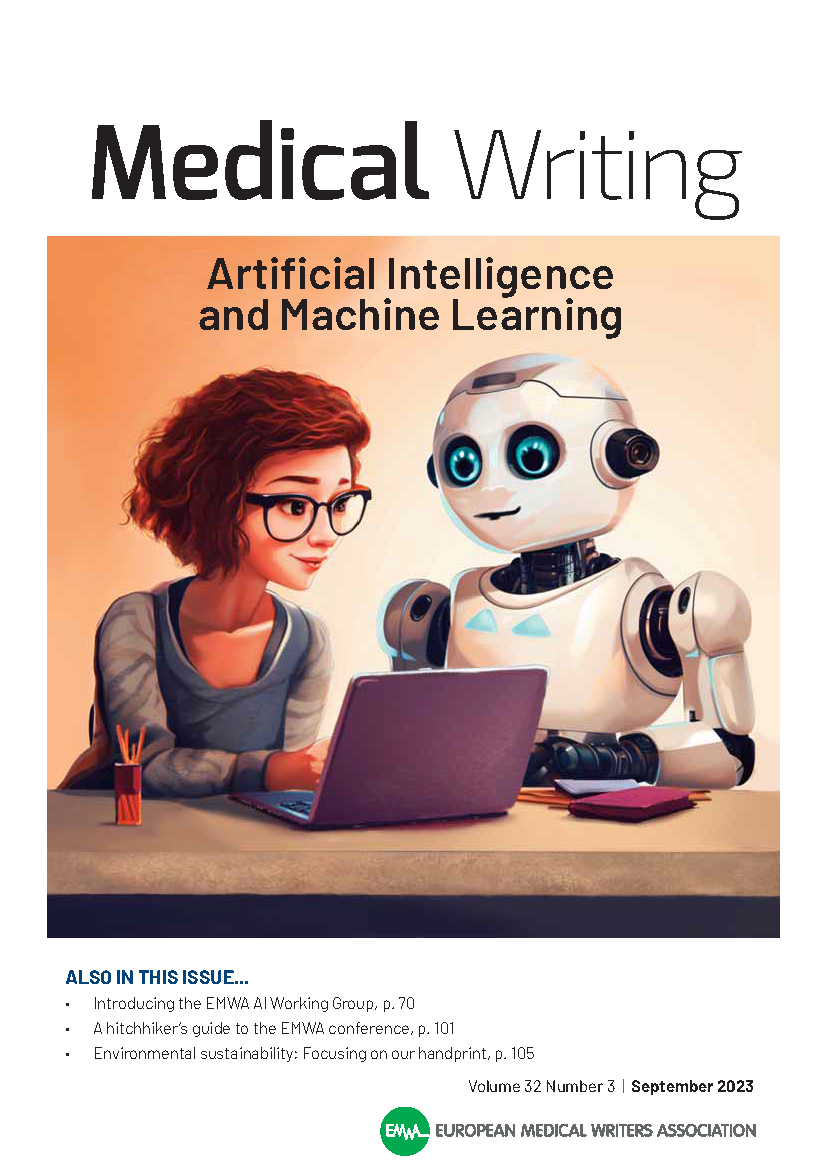
Volume 32, Issue 3 - Artificial Intelligence and Machine Learning
Digital tools for the clinical evaluation of medical devices: A guide to empower regulatory writers
Author: Azza Gramoun
Abstract
The implementation of the European Medical Device Regulation (EUMDR) has driven innovation in the digitalisation and the development of artificial intelligence (AI)-powered automations for regulatory writing. This article explores a selection of tools designed for device-related regulatory activities, highlighting their functionalities and use cases. The goals of the article are to demystify the role of AI in medical and regulatory writing, explain the process of developing AI-based automations, illustrate how these tools benefit medical writers, and most importantly enhance the readers’ skills in assessing such tools. The article discusses five automation tools: avasis, DistillerSR, Fern.ai, MedBoard, and Nested Knowledge, providing an overview of their features and benefits. The article concludes by emphasising that these automations address certain pain points faced during medical writing, yet they prioritise different features. By doing so, they empower users to improve data quality and streamline tasks in regulatory writing. Since there is no one-size-fits-all tool, the decision-making process is ultimately that of the user, not only on the type of tool to select but also on how best to leverage the software to optimise their technical documentation.
Medical Writing. 2023;32(3):16–21. https://doi.org/10.56012/hmts9332
 Download the full article
Download the full article
Search
Articles
Links
Editoral Board
Editor-in-Chief
Co-Editors
Managing Editor
Victoria White
Deputy Managing Editor
Alicia Brooks Waltman
Associate Editors
Section Editors
AI/Automation
Biotechnology
Digital Communication
EMWA News
Freelancing
Gained in Translation
Getting Your Foot in the Door
Good Writing Practice
Pablo Izquierdo / Alison McIntosh
In the Bookstores
Publications
Medical Communications/Writing for Patients
Medical Devices
My First Medical Writing
News from the EMA
Pharmacovigilance
Regulatory Matters
Regulatory Public Disclosure
Louisa Ludwig-Begall / Sarah Kabani
The Crofter: Sustainable Communications
Veterinary Writing
Editors Emeritus
Layout Designer
Chris Monk
 Visit the EMWA website
Visit the EMWA website